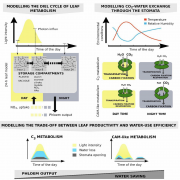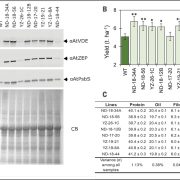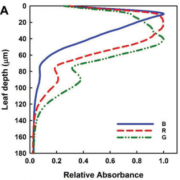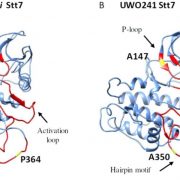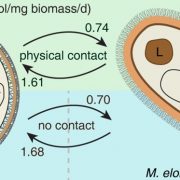How stems breathe: Oxygen production in woody stems under different light conditions
 In woody plants, we know much less about how photosynthesis functions in stems than in leaves. This study by Natale et al. focused on how chloroplasts in Fraxinus ornus stems of different ages work. The authors looked at oxygen production rates in whole stems, bark, and wood using various methods like oxygen sensors and fluorescence lifetime imaging microscopy (FLIM). The findings showed that stems produce oxygen when exposed to light, with younger stems producing more oxygen and having higher dark respiration rates than older ones. Bark was the main source of oxygen production in light, but woody parenchyma also contributed as its chloroplasts were found to be active. The authors note that photosynthesis in these deep tissues can be supported by CO2 released from respiration, and the resultant O2 can help prevent hypoxia. FLIM analysis revealed that wood had less photosystem I compared to bark, suggesting that stem chloroplasts adapt to the light quality reaching different parts of the plant. (Summary by Yueh Cho @YuehCho1984) New Phytol. 10.1111/nph.19782
In woody plants, we know much less about how photosynthesis functions in stems than in leaves. This study by Natale et al. focused on how chloroplasts in Fraxinus ornus stems of different ages work. The authors looked at oxygen production rates in whole stems, bark, and wood using various methods like oxygen sensors and fluorescence lifetime imaging microscopy (FLIM). The findings showed that stems produce oxygen when exposed to light, with younger stems producing more oxygen and having higher dark respiration rates than older ones. Bark was the main source of oxygen production in light, but woody parenchyma also contributed as its chloroplasts were found to be active. The authors note that photosynthesis in these deep tissues can be supported by CO2 released from respiration, and the resultant O2 can help prevent hypoxia. FLIM analysis revealed that wood had less photosystem I compared to bark, suggesting that stem chloroplasts adapt to the light quality reaching different parts of the plant. (Summary by Yueh Cho @YuehCho1984) New Phytol. 10.1111/nph.19782


